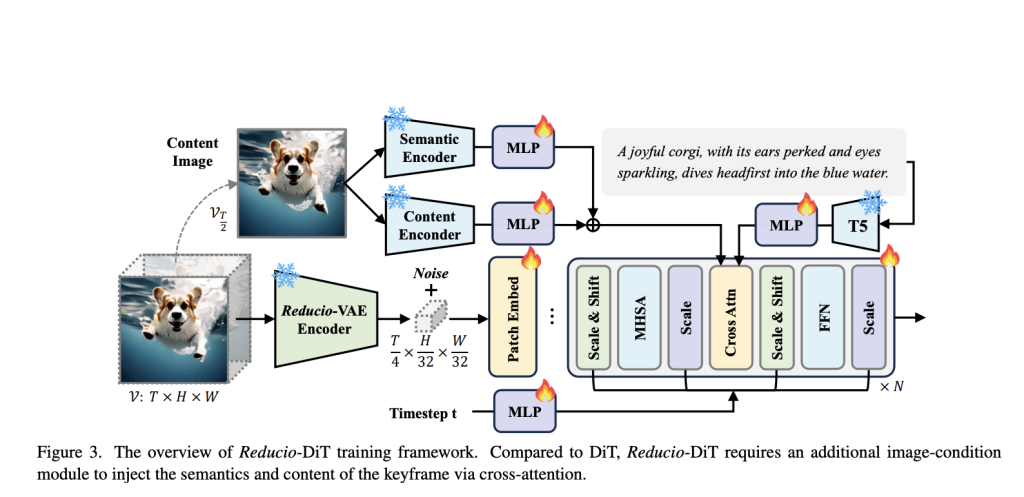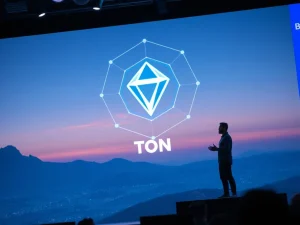Microsoft Research Introduces Reducio-DiT: Enhancing Video Generation Efficiency with Advanced Compression

Recent advancements in video generation models have enabled the production of high-quality, realistic video clips. However, these models face challenges in scaling for large-scale, real-world applications due to the computational demands required for training and inference. Current commercial models like Sora, Runway Gen-3, and Movie Gen demand extensive resources, including thousands of GPUs and millions of GPU hours for training, with each second of video inference taking several minutes. These high requirements make these solutions costly and impractical for many potential applications, limiting the use of high-fidelity video generation to only those with substantial computational resources.
Reducio-DiT: A New Solution
Microsoft researchers have introduced Reducio-DiT, a new approach designed to address this problem. This solution centers around an image-conditioned variational autoencoder (VAE) that significantly compresses the latent space for video representation. The core idea behind Reducio-DiT is that videos contain more redundant information compared to static images, and this redundancy can be leveraged to achieve a 64-fold reduction in latent representation size without compromising video quality. The research team has combined this VAE with diffusion models to improve the efficiency of generating 1024×1024 video clips, reducing the inference time to 15.5 seconds on a single A100 GPU.
Technical Approach
From a technical perspective, Reducio-DiT stands out due to its two-stage generation approach. First, it generates a content image using text-to-image techniques, and then it uses this image as a prior to create video frames through a diffusion process. The motion information, which constitutes a large part of a video’s content, is separated from the static background and compressed efficiently in the latent space, resulting in a much smaller computational footprint. Specifically, Reducio-VAE—the autoencoder component of Reducio-DiT—leverages 3D convolutions to achieve a significant compression factor, enabling a 4096-fold down-sampled representation of the input videos. The diffusion component, Reducio-DiT, integrates this highly compressed latent representation with features extracted from both the content image and the corresponding text prompt, thereby producing smooth, high-quality video sequences with minimal overhead.

This approach is important for several reasons. Reducio-DiT offers a cost-effective solution to an industry burdened by computational challenges, making high-resolution video generation more accessible. The model demonstrated a speedup of 16.6 times over existing methods like Lavie, while achieving a Fréchet Video Distance (FVD) score of 318.5 on UCF-101, outperforming other models in this category. By utilizing a multi-stage training strategy that scales up from low to high-resolution video generation, Reducio-DiT maintains the visual integrity and temporal consistency across generated frames—a challenge that many previous approaches to video generation struggled to achieve. Additionally, the compact latent space not only accelerates the video generation process but also reduces the hardware requirements, making it feasible for use in environments without extensive GPU resources.
Conclusion
Microsoft’s Reducio-DiT represents an advance in video generation efficiency, balancing high quality with reduced computational cost. The ability to generate a 1024×1024 video clip in 15.5 seconds, combined with a significant reduction in training and inference costs, marks a notable development in the field of generative AI for video. For further technical exploration and access to the source code, visit Microsoft’s GitHub repository for Reducio-VAE. This development paves the way for more widespread adoption of video generation technology in applications such as content creation, advertising, and interactive entertainment, where generating engaging visual media quickly and cost-effectively is essential.
Check out the Paper and GitHub Page. All credit for this research goes to the researchers of this project. Also, don’t forget to follow us on Twitter and join our Telegram Channel and LinkedIn Group. If you like our work, you will love our newsletter.. Don’t Forget to join our 55k+ ML SubReddit.
[FREE AI VIRTUAL CONFERENCE] SmallCon: Free Virtual GenAI Conference ft. Meta, Mistral, Salesforce, Harvey AI & more. Join us on Dec 11th for this free virtual event to learn what it takes to build big with small models from AI trailblazers like Meta, Mistral AI, Salesforce, Harvey AI, Upstage, Nubank, Nvidia, Hugging Face, and more.
Aswin AK is a consulting intern at MarkTechPost. He is pursuing his Dual Degree at the Indian Institute of Technology, Kharagpur. He is passionate about data science and machine learning, bringing a strong academic background and hands-on experience in solving real-life cross-domain challenges.









